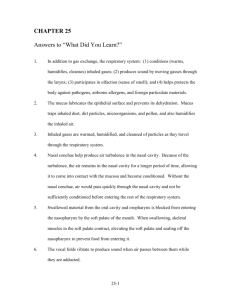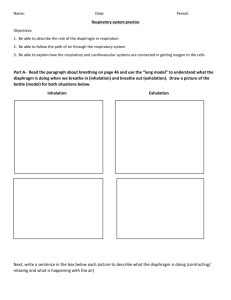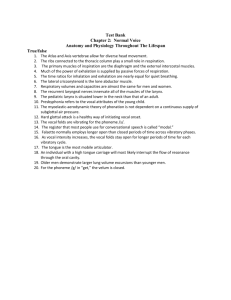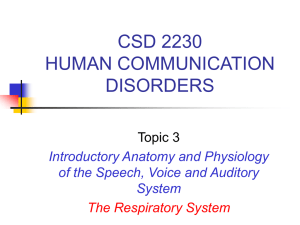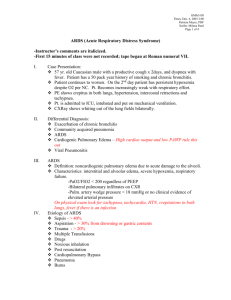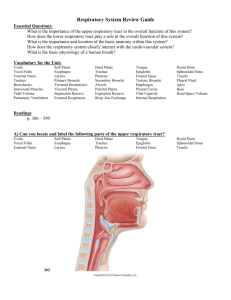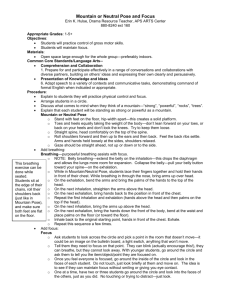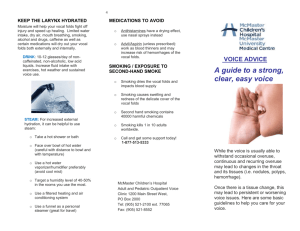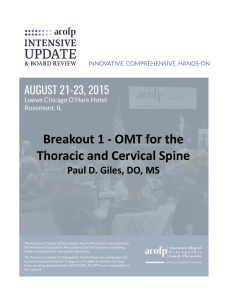chapter twenty
advertisement
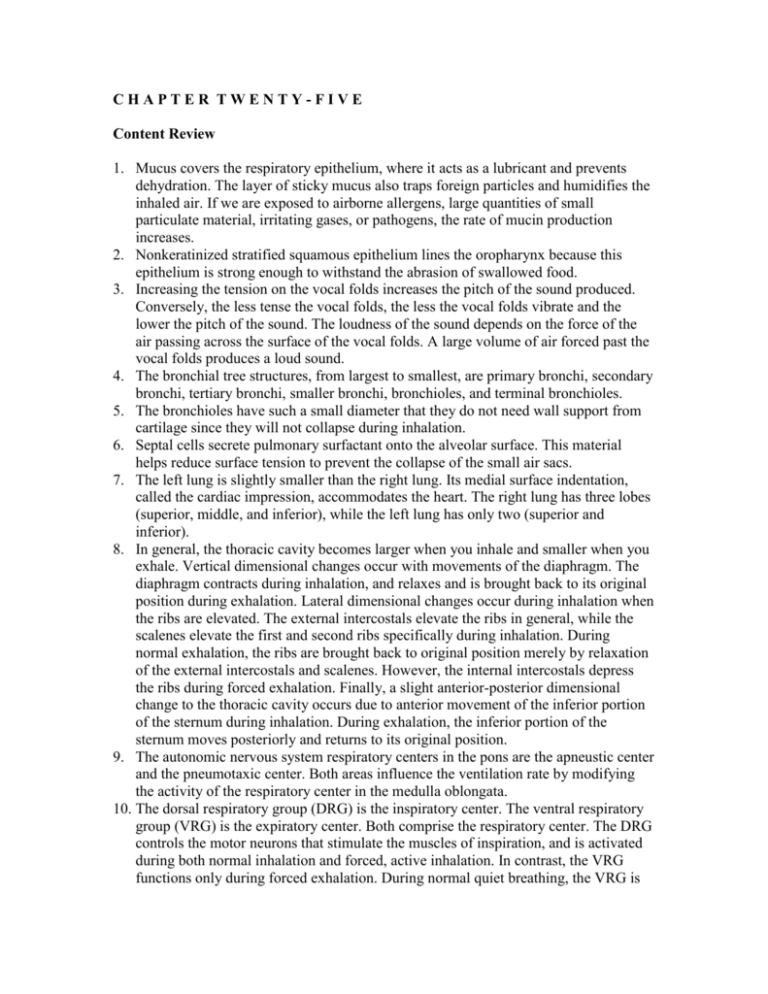
CHAPTER TWENTY-FIVE Content Review 1. Mucus covers the respiratory epithelium, where it acts as a lubricant and prevents dehydration. The layer of sticky mucus also traps foreign particles and humidifies the inhaled air. If we are exposed to airborne allergens, large quantities of small particulate material, irritating gases, or pathogens, the rate of mucin production increases. 2. Nonkeratinized stratified squamous epithelium lines the oropharynx because this epithelium is strong enough to withstand the abrasion of swallowed food. 3. Increasing the tension on the vocal folds increases the pitch of the sound produced. Conversely, the less tense the vocal folds, the less the vocal folds vibrate and the lower the pitch of the sound. The loudness of the sound depends on the force of the air passing across the surface of the vocal folds. A large volume of air forced past the vocal folds produces a loud sound. 4. The bronchial tree structures, from largest to smallest, are primary bronchi, secondary bronchi, tertiary bronchi, smaller bronchi, bronchioles, and terminal bronchioles. 5. The bronchioles have such a small diameter that they do not need wall support from cartilage since they will not collapse during inhalation. 6. Septal cells secrete pulmonary surfactant onto the alveolar surface. This material helps reduce surface tension to prevent the collapse of the small air sacs. 7. The left lung is slightly smaller than the right lung. Its medial surface indentation, called the cardiac impression, accommodates the heart. The right lung has three lobes (superior, middle, and inferior), while the left lung has only two (superior and inferior). 8. In general, the thoracic cavity becomes larger when you inhale and smaller when you exhale. Vertical dimensional changes occur with movements of the diaphragm. The diaphragm contracts during inhalation, and relaxes and is brought back to its original position during exhalation. Lateral dimensional changes occur during inhalation when the ribs are elevated. The external intercostals elevate the ribs in general, while the scalenes elevate the first and second ribs specifically during inhalation. During normal exhalation, the ribs are brought back to original position merely by relaxation of the external intercostals and scalenes. However, the internal intercostals depress the ribs during forced exhalation. Finally, a slight anterior-posterior dimensional change to the thoracic cavity occurs due to anterior movement of the inferior portion of the sternum during inhalation. During exhalation, the inferior portion of the sternum moves posteriorly and returns to its original position. 9. The autonomic nervous system respiratory centers in the pons are the apneustic center and the pneumotaxic center. Both areas influence the ventilation rate by modifying the activity of the respiratory center in the medulla oblongata. 10. The dorsal respiratory group (DRG) is the inspiratory center. The ventral respiratory group (VRG) is the expiratory center. Both comprise the respiratory center. The DRG controls the motor neurons that stimulate the muscles of inspiration, and is activated during both normal inhalation and forced, active inhalation. In contrast, the VRG functions only during forced exhalation. During normal quiet breathing, the VRG is inactive, and exhalation is a passive event that does not require nervous stimulation.
